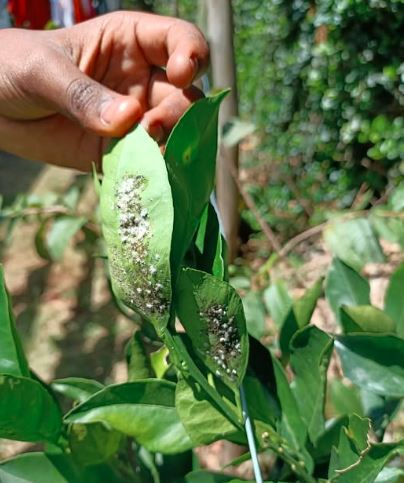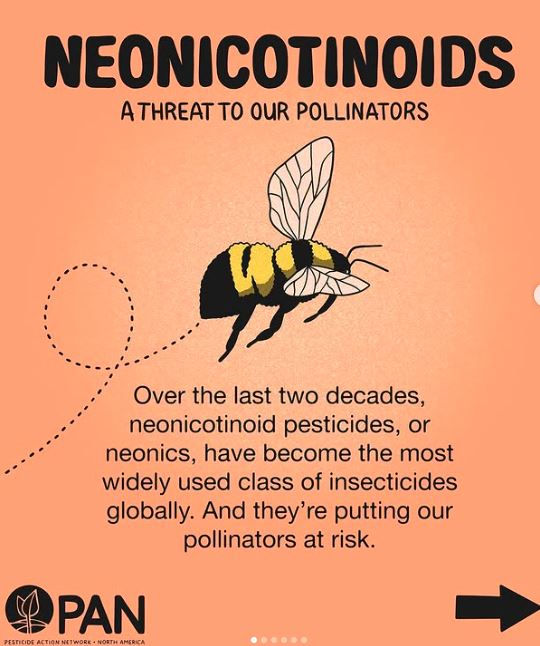Top 10 Pest Control Products for Modern Farmers
- BeyondForest

- Nov 10
- 7 min read

1.)Bio-Pesticides (Eco-Friendly & Residue-Free)
3.)Neonicotinoids (Systemic Protection for Many Crops)
4.)Copper-Based Fungicides (Reliable Disease Protection)
5.)Sulfur Fungicides (Effective for Mildew & Mites)
7.)Insect Growth Regulators (IGRs)
8.)Sticky Traps & Smart Insect Monitoring Devices
10.)Herbicides (Weed Control Solutions for Large Farms)
🟨 Yellow – Attracts whiteflies, leafminers, aphids, and fungus gnats
🟦 Blue – Targets thrips and leafminers

Image of Bioenemy Sticky Cards
Bio-pesticides are becoming the preferred choice for modern farmers who want effective pest control without harming the environment, soil health, or beneficial insects. Unlike synthetic chemicals, bio-pesticides are derived from natural sources such as bacteria, fungi, viruses, and plant extracts. Their mode of action is highly targeted, meaning they attack specific pests without affecting humans, livestock, pollinators, or aquatic life.
Popular bio-pesticides include Bacillus thuringiensis (Bt) for caterpillars, Beauveria bassiana for aphids and whiteflies, Metarhizium anisopliae for soil pests, and neem-based products for a wide range of insects.

Image of Lemons infected by Mealybugs
One of the biggest advantages of bio-pesticides is that they leave little to no chemical residue, making them ideal for farmers producing vegetables, fruits, herbs, or export crops that require strict residue compliance. They also break down quickly in the environment, reducing the risk of long-term contamination or pesticide buildup in soil and water bodies.
bio-pesticides are safe for workers handling the crops and minimize pre-harvest intervals, allowing quicker harvesting after spray.
Its a culture in Israel that nature solves its own problems. So they use other animals that eat the pest that endanger their crops allowing them to practice organic farming.
Pyrethroid Insecticides (Fast Knockdown Action)
Pyrethroids work by disrupting the nervous system of insects, causing rapid paralysis and death within minutes of contact.
Allethrin a type I pyrethroid. It is used as an important constituent in commercial insecticides
Pyrethroid insecticides are among the most widely used pest control products in modern agriculture due to their extremely fast knockdown effect and broad-spectrum activity. They are synthetic versions of natural pyrethrins extracted from chrysanthemum flowers, designed to be more stable, longer-lasting, and more effective in the field.
These insecticides are highly effective against common crop pests such as caterpillars, beetles, aphids, whiteflies, and thrips. Farmers rely on them during periods of high pest pressure because they provide quick results and can protect crops even under challenging weather conditions. Pyrethroids are relatively affordable and compatible with many tank-mixed products, making them practical for large-scale operations.
Pyrethroid should be used responsibly to avoid resistance buildup in pest populations. Rotating pyrethroids with other insecticide classes and integrating them into IPM programs helps maintain long-term effectiveness while ensuring sustainable crop protection.
Neonicotinoids (Systemic Protection for Many Crops)
Neonicotinoids are a class of systemic insecticides that move through a plant’s tissues, providing long-lasting protection from the inside out. Once absorbed, they target an insect’s nervous system, offering strong control against sucking and chewing pests such as aphids, whiteflies, leaf miners, and beetles. Because the active ingredient circulates within the plant, neonicotinoids protect new growth and are less affected by rainfall or sunlight. They are especially popular in seed treatments and early-season crop protection.
responsible use is important to avoid impacts on pollinators. When applied correctly, neonicotinoids deliver reliable, cost-effective pest control for a wide range of global crops.
Copper-Based Fungicides (Reliable Disease Protection)
Copper-based fungicides are widely used in modern agriculture because they offer dependable protection against a broad range of fungal and bacterial diseases. They work by releasing copper ions that disrupt pathogen enzymes, preventing infection before it starts. These fungicides are especially effective for crops like tomatoes, potatoes, citrus, mangoes, and various fruit trees prone to blight, mildew, and leaf spot. Because they act as a protective barrier, farmers typically apply them before rain or during early disease development.
Sulfur Fungicides (Effective for Mildew & Mites)
Sulfur fungicides are some of the oldest and most trusted disease-control products used in farming, especially for managing powdery mildew, rust, and certain mites. They work by disrupting fungal cell metabolism and preventing spores from germinating, making them highly effective as preventive sprays. Sulfur is commonly used on grapes, cucurbits, berries, roses, and many orchard crops. It is also favored in organic farming because it is naturally occurring and leaves minimal residue. Since sulfur performs best in warm, dry conditions, farmers avoid spraying during extreme heat to prevent leaf burn. When applied correctly, sulfur offers reliable, low-cost protection for sensitive crops.
Biological Pest Control Agents (Predators & Parasitoids)
Biological pest control uses living organisms—such as predators, parasitoids, and beneficial microbes—to naturally suppress pest populations. Common predators include ladybugs, lacewings, and predatory mites, which feed aggressively on aphids, whiteflies, and spider mites. Parasitoids like Trichogramma wasps target pest eggs, stopping infestations before they begin. These agents are especially useful in greenhouses, high-value crops, and organic farming systems. Because they target specific pests, they pose no risk to humans, pollinators, or the environment. When integrated into an IPM program, biological control significantly reduces chemical use, improves long-term field balance, and promotes healthier, more sustainable crop production.
Insect Growth Regulators (IGRs)
Insect Growth Regulators are specialized pest control products that disrupt the growth, development, or reproduction of insects. Instead of killing pests instantly, IGRs prevent larvae from maturing into adults or block adult insects from laying viable eggs. This makes them highly effective for long-term control of pests like whiteflies, aphids, thrips, mosquitoes, and fleas. IGRs are widely used in both greenhouse and field crops because they are selective, low-toxicity, and safe for beneficial insects. Since they break the pest life cycle, IGRs reduce future infestations and help slow resistance development.
Sticky Traps & Smart Insect Monitoring Devices
The solar-powered light attracts insects at night, trapping and reducing pest populations without harming beneficial organisms or the environment.- Timmy Agri consultants

Solar Power for Sustainable Pest Control by Timmy Agri consultants Co.
Sticky traps and smart monitoring devices help farmers detect pest activity early, reducing unnecessary spraying and improving precision control. Traditional yellow and blue sticky traps attract pests like whiteflies, thrips, and leaf miners, making them ideal for greenhouses and open fields. Smart traps go further by using sensors or cameras to count insect populations in real time. These devices send alerts to mobile apps, helping farmers make quick, data-driven decisions and cut costs while protecting crop health.
Organic Repellents (Garlic, Neem, Capsaicin Blends)
Kerol fits under Organic / Physical Repellents (Smell-Based Deterrents) It is used in the same category as garlic, chili, neem, and smoke repellents, where the goal is not to kill pests but to repel them using strong odors.

Kerol is usually placed in an open container within the farm. The smell creates an environment fruit flies, melon flies, and some insects dislike. This reduces their activity around crops like Butternuts, Pumpkins, Watermelons, Cucumbers and Squash
Organic repellents made from garlic, neem, and capsaicin offer farmers a natural, low-toxicity way to manage pests without harming beneficial insects or soil health. These plant-based extracts work by masking crop scents, irritating pests, or disrupting feeding behavior. Neem oil, in particular, is widely used for aphids, mites, and whiteflies due to its anti-feedant and growth-regulating properties. Garlic and chili-based sprays deter chewing insects and some animals. Because they break down quickly, organic repellents are safe for vegetables, fruits, and herbs. They are ideal for farmers targeting residue-free production or integrating sustainable practices into their pest management programs.
Herbicides (Weed Control Solutions for Large Farms)
Herbicides play a crucial role in modern farming by helping large-scale producers manage weeds efficiently and protect yields. These products work by targeting unwanted plants that compete with crops for nutrients, light, and water. Herbicides fall into two main categories: selective types that kill specific weeds without harming crops, and non-selective types used for total vegetation control before planting or around farm boundaries. Popular active ingredients include glyphosate, atrazine, and 2,4-D. When used properly within an Integrated Weed Management plan, herbicides reduce labour costs, save time, and ensure cleaner fields, leading to healthier crop stands and higher productivity.
What is the safest pest control solution for small-scale farmers?
Bio-pesticides and organic repellents like neem, garlic extract, and Beauveria bassiana are considered the safest because they leave minimal residue and are environmentally friendly.
Kerol” is simply a type of kerosene/paraffin-based product
Which pest control products work best for vegetables?
Vegetable farmers commonly use pyrethroids, copper fungicides, sulfur fungicides, and sticky traps. Bio-pesticides are also widely preferred for leafy greens.
How often should I apply pesticides on my crops?
Most products are applied every 7–14 days depending on pest pressure, rainfall, and crop type. Always follow the manufacturer’s label to avoid overuse or resistance.
Can I mix different pest control products together?
Some products are compatible, but many fungicides and insecticides cannot be mixed without causing crop burn or reducing effectiveness. Always perform a jar test or check compatibility charts.
Yes. Predators such as ladybugs, parasitic wasps, and predatory mites can significantly reduce pest populations, especially in greenhouses and organic farms.
What is the difference between bio-pesticides and chemical pesticides?
Bio-pesticides come from natural sources like bacteria, fungi, or plant extracts. Chemical pesticides are synthetic and usually stronger but may leave residue or affect non-target organisms.
What is an insect growth regulator (IGR)?
IGRs prevent pests from reaching maturity or reproducing. They are effective for long-term control of pests like whiteflies, aphids, and caterpillars.
Which pest control product is best for fruit trees?
Copper fungicides, sulfur fungicides, horticultural oils, and pheromone traps work best for fruit trees. Systemic insecticides may be used in severe infestations.
Smart traps use sensors or cameras to detect pest activity in real time. They help reduce unnecessary spraying and improve decision-making for precision agriculture.
Do organic farms use pest control products?
Yes. Organic farms rely heavily on bio-pesticides, beneficial insects, sticky traps, neem oil, and mechanical controls. Chemical pesticides are not allowed.








Comments